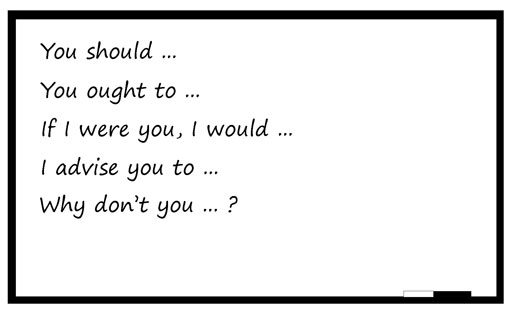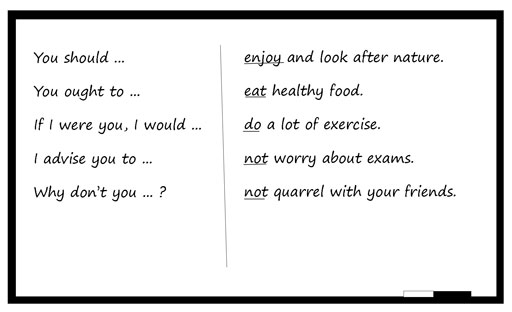4 Combining techniques
Now read Case Study 2.
Case Study 2: Ms Gupta runs a brainstorming session on Nehru’s letter to India
Ms Gupta used the techniques from this unit to teach a passage with Class IX. She prepared the class with a pre-reading activity and then did some activities after the students had finished reading to practise language relating to the theme of the passage.
Last week, I was teaching Nehru’s ‘A letter to the children of India’ with Class IX [see Resource 1]. Before my students read the text, I wrote the title on the board, and explained what the letter was about. I told them that it was written by an old man who was giving some advice to the younger generation.
I asked my students to think of some advice that they would give to the children of India. A couple of students made some suggestions, such as ‘You should visit Delhi!’ and ‘You should learn about technology!’ I then told them to work in pairs, and to write down five pieces of advice that they would give. I told them to write the sentences in English. I wasn’t worried about students making mistakes as they wrote. I just wanted them to get some ideas. After three minutes, I ended the activity, and asked three or four pairs to read out some examples of what they had written.
Then I told the class to read Nehru’s letter silently. I told them to underline the advice that he gave in his letter as they read. I also gave them a time limit of ten minutes to read and find the advice. As they read, I walked around the room to make sure that everyone understood what they needed to do. I noticed that Ajala was not underlining anything in the letter. She had not understood that she needed to find advice, so I explained and helped her to find something. Then she was able to do it on her own.
When the time was up, I asked my students to compare the advice that they had found with the classmate sitting next to them. I also told them to discuss how it was similar to or different from the advice that they had written before they read the letter. As they compared their ideas, I walked around the room and listened to the conversations. It was clear that some students had understood the advice in the letter, while some students were struggling. After a few minutes, I asked the class to stop talking. We then discussed the advice in the letter as a whole class, and I explained any words that were preventing students from understanding the advice given.
After this, I wrote some phrases that we might use when we give advice in English on the board:

I asked my students to imagine that they were an old grandfather and grandmother like Nehru, talking to their grandchildren. Some of them thought this was quite funny, and they liked the idea! I asked them to think of some advice that they might give to their grandchildren. I gave them an example: ‘You should work hard.’ A couple of students gave some more ideas and I added them to the board like this:

I pointed out that students could use any beginning (on the left-hand side of the board) with any ending (on the right-hand side of the board). I underlined the verbs (‘enjoy’, ‘eat’, ‘do’, ‘be’, ‘avoid’) and explained that they should use the infinitive form of the verbs after these phrases. Then I read the sentences aloud, and asked the students to repeat them in order to practise their pronunciation.
Next, I organised students into pairs, telling them that one of them was the grandparent, and the other was the grandchild. I explained that the grandparent should give advice to the grandchild. When they were ready, I gave them two or three minutes to act out the roles, and then they exchanged roles. As I listened, I noticed that some pairs were using the advice written on the board, while more confident speakers were coming up with new phrases.
Finally, as an assignment, I asked students to write their own letter titled ‘A letter to the children of India’. I told them to use some of the phrases that they had just practised, and to imagine that the letter would be published in the Times of India. Next class, I had some very interesting letters to read!
Activity 5: Try in the classroom – a letter to the children of India
In Case Study 2, the students do several activities before, during and after reading Nehru’s letter. These activities include practice in listening, speaking, reading and writing. You can find the teacher’s lesson plan in Resource 4. Try using this lesson plan to teach this lesson (or a similar lesson) to your students.
Pause for thought Here are some questions for you to think about after trying this activity. If possible, discuss these questions with a colleague.
|
You do not need to use all of the techniques each time you teach a lesson. However, it is good to use as many as you can as often as you can. You can use these techniques with any lesson in the textbook, or any other text (e.g. an article in a newspaper). Write a similar plan with another lesson or text, and share it with your colleagues.
3 Checking understanding of a lesson after reading it
